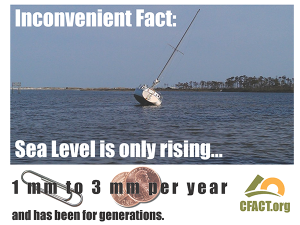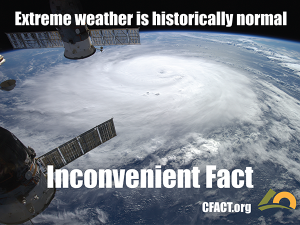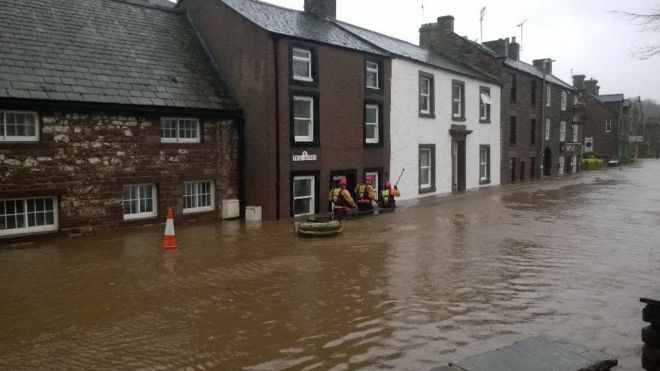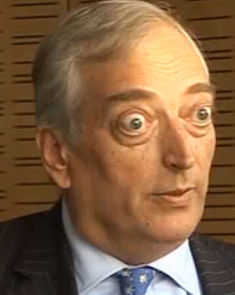cancel2 2022
Canceled
CFACT has participated in the UN climate process going back to the original Rio Earth summit. We are an officially recognized NGO observer at COP 21. CFACT’s display is in the NGO pavilion at booth 37c. We used our space to inject four “inconvenient facts” into the COP. They are the kind of rock solid, 100% scientifically valid points that leave the warming-indoctrinated spluttering.
Here they are:

INCONVENIENT FACTS: TEMPERATURE
“Global climate trend since Nov. 16, 1978: +0.11 C per decade” – University of Alabama, Huntsville
“The troposphere has not warmed as fast as almost all climate models predict.” “After 1998, the observations are likely to be below the simulated values, indicating that the simulation as a whole are predicting too much warming.” – Remote Sensing Systems
“Satellite analysis of the upper atmosphere is more accurate, and should be adopted as the standard way to monitor global temperature change.” – NASA, April, 1990
There is a “robust” cosmic ray-global temperature relationship… and thus provide further corroboration of the solar/cosmic ray theory of climate of Svensmark et al. – National Academy of Sciences of the United States of America, Aug 2015
“Assuming the proposed cuts are extended through 2100 but not deepened further, they result in about 0.2°C less warming by the end of the century compared with our estimates. – Massachusetts Institute of Technology, Energy and Climate Outlook, 2015
“Using the peer-reviewed climate model MAGICC, I estimate the marginal impact of carbon reduction promises called INDCs (Intended Nationally Determined Contributions) from the EU, USA, China and the rest of the world, along with the likely global policy output. My major finding is that the total effect is very small: less than 0.05°C difference by the end of the century.” – Global Policy, Nov. 2015
All countries’ commitments from Paris = less than 0.05°C difference by the end of the century.

“Absolute global sea level rise is believed to be 1.7-1.8 millimeters/year.” – NOAA
“Tide gauge records along coastlines provide evidence that mean sea levels (MSLs) have risen since the late nineteenth century with globally averaged rates of 1.33–1.98 mm per year… There has been “underestimation of possible natural trends of up to ~1 mm per year erroneously enhancing the significance of anthropogenic footprints.”
– University of Siegen, Nature Communications, July, 2015
“According to the new analysis of satellite data, the Antarctic ice sheet showed a net gain of 112 billion tons of ice a year from 1992 to 2001. That net gain slowed to 82 billion tons of ice per year between 2003 and 2008.”
“Antarctica is not currently contributing to sea level rise, but is taking 0.23 millimeters per year away,”
– NASA
“Global sea level is less sensitive to high atmospheric carbon dioxide concentrations than previously thought.”
– Stanford, Geology, August, 2015
Island nations not sinking.
“No islands have been lost, the majority have enlarged, and there has been a 7.3% increase in net island area over the past century (A.D. 1897–2013). There is no evidence of heightened erosion over the past half-century as sea-level rise accelerated. Reef islands in Funafuti continually adjust their size, shape, and position in response to variations in boundary conditions, including storms, sediment supply, as well as sea level. Results suggest a more optimistic prognosis for the habitability of atoll nations.”
Geology, March, 2015

“The global population of polar bears is about 26,000 bears. This is up 1,000 bears from 2014. Estimations are between 25,000- 30,000 bears globally.” – International Union for Conservation of Nature
“Arctic sea ice is increasing, with the extent of ice at the highest it has been since 2004.
– Denmark Ocean and Ice Services
“Arctic sea ice persisted in the James and Hudson bays well into August of 2015. it was reported that the worst mid-summer ice conditions in 20 years was preventing the routine delivery of supplies by ship.” – NASA
“Sea ice in at least three Eastern Canadian polar bear subpopulations was well above normal for 2015.” – Canadian Ice Services
Arctic sea ice is up by at least a third after a cool summer in 2013. “It would suggest that sea ice is more resilient perhaps,” says Rachel Tilling, University College London.” – The Guardian, July 2015

“We have identified considerable inter-annual variability in the frequency of global hurricane landfalls,” the authors state, “but within the resolution of the available data, our evidence does not support the presence of significant long-period global or individual basin linear trends for minor, major, or total hurricanes within the period(s) covered by the available quality data.”
– Journal of the American Meteorological Society, July 2012
“There is not enough evidence at present to suggest more than low confidence in a global-scale observed trend in drought or dryness (lack of rainfall) since the middle of the 20th century.
IPCC 5th Assessment Report
“There is low confidence in any long term increases in tropical cyclone activity … and low confidence in attributing global changes to any particular cause.” Any increased hurricane damages “have not been conclusively attributed to anthropogenic climate change; most such claims are not based on scientific attribution methods.” There is “low confidence” for trends on tornadoes, and “the evidence for climate driven changes in river floods is not compelling.”
IPCC 5th Assessment Report
“When closely examined there appears to be no increase in extreme weather events in recent years compared to the period 1945–77, when the Earth’s mean temperature was declining. The global warming/extreme weather link is more a perception than reality (Khandekar et al. 2005). The purported warming/extreme weather link has been fostered by increased and uncritical media attention to recent extreme weather events. The latest IPCC documents appear to de-emphasize the warming/extreme weather link by suggesting ‘low confidence’ in linking some of the events to recent warming of the climate.”<
The Global Warming Extreme Weather Link, GWPF, 2013
– See more at: http://www.cfact.org/2015/12/04/cfa...b56-856b5262e4-269639569#sthash.KXIatACj.dpuf
About these ads
Here they are:

INCONVENIENT FACTS: TEMPERATURE
“Global climate trend since Nov. 16, 1978: +0.11 C per decade” – University of Alabama, Huntsville
“The troposphere has not warmed as fast as almost all climate models predict.” “After 1998, the observations are likely to be below the simulated values, indicating that the simulation as a whole are predicting too much warming.” – Remote Sensing Systems
“Satellite analysis of the upper atmosphere is more accurate, and should be adopted as the standard way to monitor global temperature change.” – NASA, April, 1990
There is a “robust” cosmic ray-global temperature relationship… and thus provide further corroboration of the solar/cosmic ray theory of climate of Svensmark et al. – National Academy of Sciences of the United States of America, Aug 2015
“Assuming the proposed cuts are extended through 2100 but not deepened further, they result in about 0.2°C less warming by the end of the century compared with our estimates. – Massachusetts Institute of Technology, Energy and Climate Outlook, 2015
“Using the peer-reviewed climate model MAGICC, I estimate the marginal impact of carbon reduction promises called INDCs (Intended Nationally Determined Contributions) from the EU, USA, China and the rest of the world, along with the likely global policy output. My major finding is that the total effect is very small: less than 0.05°C difference by the end of the century.” – Global Policy, Nov. 2015
All countries’ commitments from Paris = less than 0.05°C difference by the end of the century.

“Absolute global sea level rise is believed to be 1.7-1.8 millimeters/year.” – NOAA
“Tide gauge records along coastlines provide evidence that mean sea levels (MSLs) have risen since the late nineteenth century with globally averaged rates of 1.33–1.98 mm per year… There has been “underestimation of possible natural trends of up to ~1 mm per year erroneously enhancing the significance of anthropogenic footprints.”
– University of Siegen, Nature Communications, July, 2015
“According to the new analysis of satellite data, the Antarctic ice sheet showed a net gain of 112 billion tons of ice a year from 1992 to 2001. That net gain slowed to 82 billion tons of ice per year between 2003 and 2008.”
“Antarctica is not currently contributing to sea level rise, but is taking 0.23 millimeters per year away,”
– NASA
“Global sea level is less sensitive to high atmospheric carbon dioxide concentrations than previously thought.”
– Stanford, Geology, August, 2015
Island nations not sinking.
“No islands have been lost, the majority have enlarged, and there has been a 7.3% increase in net island area over the past century (A.D. 1897–2013). There is no evidence of heightened erosion over the past half-century as sea-level rise accelerated. Reef islands in Funafuti continually adjust their size, shape, and position in response to variations in boundary conditions, including storms, sediment supply, as well as sea level. Results suggest a more optimistic prognosis for the habitability of atoll nations.”
Geology, March, 2015

“The global population of polar bears is about 26,000 bears. This is up 1,000 bears from 2014. Estimations are between 25,000- 30,000 bears globally.” – International Union for Conservation of Nature
“Arctic sea ice is increasing, with the extent of ice at the highest it has been since 2004.
– Denmark Ocean and Ice Services
“Arctic sea ice persisted in the James and Hudson bays well into August of 2015. it was reported that the worst mid-summer ice conditions in 20 years was preventing the routine delivery of supplies by ship.” – NASA
“Sea ice in at least three Eastern Canadian polar bear subpopulations was well above normal for 2015.” – Canadian Ice Services
Arctic sea ice is up by at least a third after a cool summer in 2013. “It would suggest that sea ice is more resilient perhaps,” says Rachel Tilling, University College London.” – The Guardian, July 2015

“We have identified considerable inter-annual variability in the frequency of global hurricane landfalls,” the authors state, “but within the resolution of the available data, our evidence does not support the presence of significant long-period global or individual basin linear trends for minor, major, or total hurricanes within the period(s) covered by the available quality data.”
– Journal of the American Meteorological Society, July 2012
“There is not enough evidence at present to suggest more than low confidence in a global-scale observed trend in drought or dryness (lack of rainfall) since the middle of the 20th century.
IPCC 5th Assessment Report
“There is low confidence in any long term increases in tropical cyclone activity … and low confidence in attributing global changes to any particular cause.” Any increased hurricane damages “have not been conclusively attributed to anthropogenic climate change; most such claims are not based on scientific attribution methods.” There is “low confidence” for trends on tornadoes, and “the evidence for climate driven changes in river floods is not compelling.”
IPCC 5th Assessment Report
“When closely examined there appears to be no increase in extreme weather events in recent years compared to the period 1945–77, when the Earth’s mean temperature was declining. The global warming/extreme weather link is more a perception than reality (Khandekar et al. 2005). The purported warming/extreme weather link has been fostered by increased and uncritical media attention to recent extreme weather events. The latest IPCC documents appear to de-emphasize the warming/extreme weather link by suggesting ‘low confidence’ in linking some of the events to recent warming of the climate.”<
The Global Warming Extreme Weather Link, GWPF, 2013
– See more at: http://www.cfact.org/2015/12/04/cfa...b56-856b5262e4-269639569#sthash.KXIatACj.dpuf
About these ads










